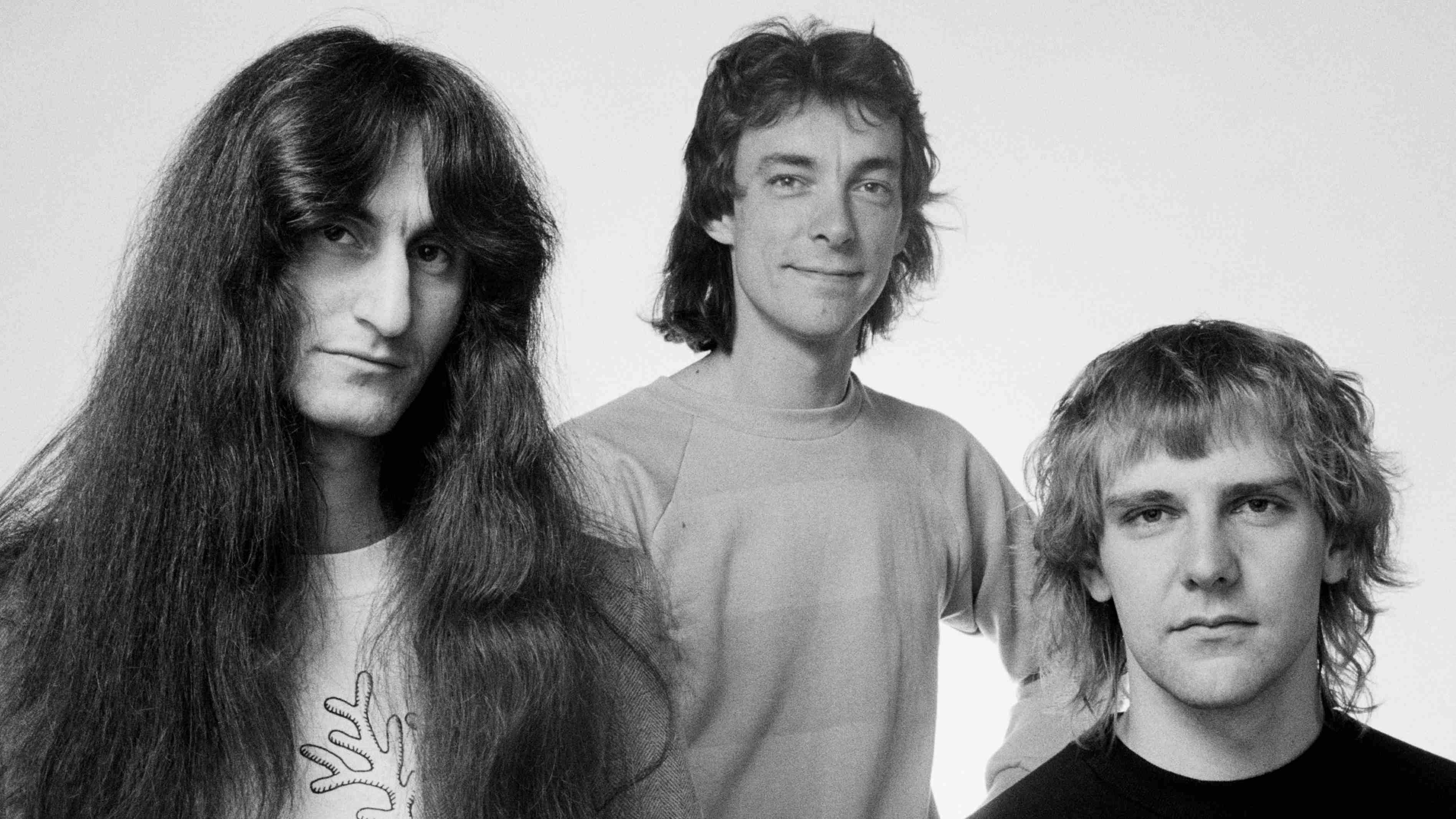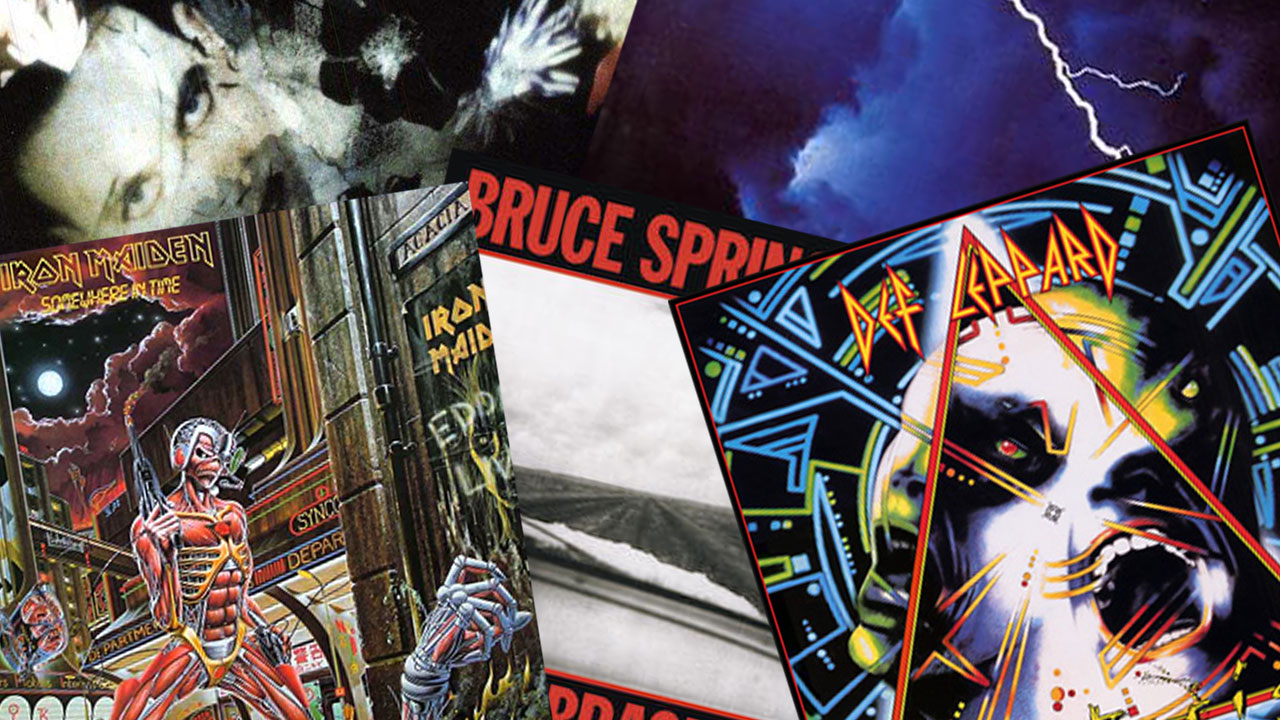
While it may be best remembered for its preened rockstars, tight jeans and regrettable haircuts, the 80s was a time of huge innovation when it came to rock music. By the time the decade gave itself over to monolithic dirge of grunge as the 90s rolled around, it had spawned new classics in the realms of gothic rock, prog rock, folk rock and pretty much everything in between.
But with a genre boasting so much diversity in its canon, how do you go about furnishing your collections with its classics? Well, that's where we come in. We've assembled the quintessential collection of 80s rock cuts to provide the healthiest of foundations to every rock fan's record collection.

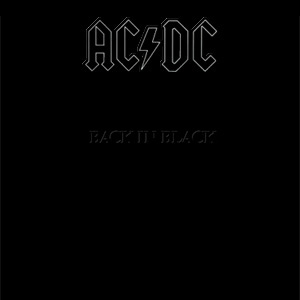
AC/DC - Back In Black (Albert/Atlantic, 1980)
There was a powerful significance in that title, and that none-more-black cover. Angus described Back In Black as “our tribute to Bon”, but it became so much more than that. The biggest-selling album of AC/DC’s career, and the second-biggest-selling ever (after Michael Jackson’s Thriller) Back In Black is the mother of all comeback records and arguably the greatest hard rock album of all time.
The way the band tell it, it was the worst of times and it was the best of times. Bon’s death had shook them, but this new singer gelled instantly and the ideas came thick and fast. The result was an album with so many classic songs: Shoot To Thrill, What Do You Do For Money Honey (a song that dates from the Powerage sessions), and of course that genius title track, built on a juddering riff that sounds like the blues if it was deconstructed by Satan and then rebuilt by Tony Stark. Out of tragedy came AC/DC’s greatest triumph.
Released in July 1980, the album is still the second best-selling album of all time. Despite selling so many records, Back In Black didn’t reach #1 in the US. On its initial release it would only reach #4 in the charts across the pond, but did reach #1 in the UK, their home country, Australia, and France. Each time the album has been reissued, and reached the Billboards charts again, it has only managed to reach #1 on the Billboard Top Pop Catalogue.
Buy from HMV | Buy from Amazon
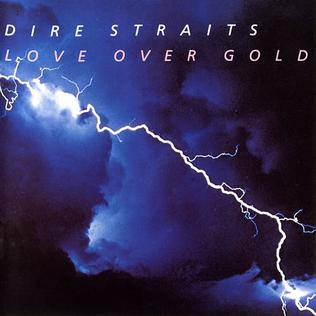
Dire Straits - Love Over Gold (Vertigo/Warner Bros, 1982)
Okay, okay, we hear you: no Brothers In Arms?! While we’d agree that Dire Straits’ follow-up album is an excellent piece of work that’s worthy of coverage, we’d argue that it’s more associated with the rise of the CD, and that this gem from 1982 is a far more interesting record, with an equally eye-catching piece of cover art.
The latest news, features and interviews direct to your inbox, from the global home of alternative music.
Releasing an album that starts with a 14-minute song might sound like commercial suicide, but writer Mark Knopfler had no intention of following cash – he just wanted to craft a collection of epic tunes. As it turned out, the cash would follow anyway, with Love Over Gold reaching #1 in the UK album charts and staying in the top 100 for a total of 200 weeks (Brothers In Arms would eventually top it with 228 weeks).
Recorded at New York’s Power Station in just over nine weeks and produced solely by Knopfler, the Love Over Gold recording sessions are notable for producing a number of songs that never made it to the final album, including The Way It Always Starts, Badges, Posters, Stickers And T-Shirts and the excellent Private Dancer, which ended up on Tina Turner’s comeback album.
The huge success of Love Over Gold and the sheer accessibility of vinyl during the ‘80s means it’s possible to pick it up for under a fiver; represses are more in the £20 region. It’s a paltry price to pay for such an interesting album, and allows you to judge for yourself if opening with the 14-minute Telegraph Road was such a bad idea (it wasn’t).
Buy from HMV | Buy from Amazon
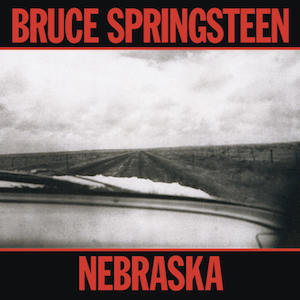
Bruce Springsteen - Nebraska (Columbia, 1982)
Between The River, a 1980 double album which was immense in its scope and vision, and 1984’s Born In The USA, a giant hit, Bruce Springsteen recorded an album that was subtler in all possible ways – 1982’s Nebraska. Plain in instrumentation and presented with stark artwork, this atypical record may not be Springsteen’s loudest, brashest or most vivid work, but it’s definitely one of his most emotional.
The creation of the album makes for a fascinating story. Springsteen recorded the whole thing solo, on a four-track tape recorder, in the bedroom of his home in January 1982. Using mostly acoustic guitar, a drum machine and a few extra instruments such as mandolin and organ, he created a suite of dark, folk-influenced songs that took a sombre view of life in America.
The title track was based on the tale of Charles Starkweather, a serial killer from the ’50s, while Atlantic City considered the tale of a man forced to take a job in the criminal underworld. ‘Johnny 99’ was about a factory worker who is laid off and kills a man in his desperation, and ‘Highway Patrolman’ concerns a police officer who lets his brother escape justice even though he has committed a murder. It’s powerful stuff, and a long way from the pyrotechnics of the albums which preceded and followed it. The resulting album went on to become a real gem in Springsteen’s catalogue.
Buy from HMV | Buy from Amazon
- Want some new wax? Explore the best Black Friday vinyl deals
- Treat your vinyl to the best turntables in the world
- On a budget? Spin 'em on the best budget turntables instead
- 9 cool vinyl record storage ideas
- Does 180g vinyl sound better?
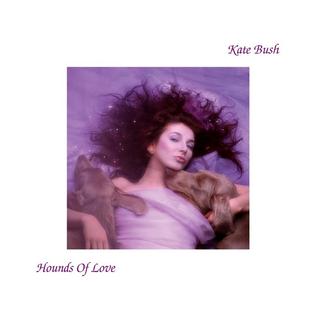
Kate Bush - Hounds Of Love (EMI, 1985)
The ‘80s have been by far the most prolific decade of the British songwriter Kate Bush’s career so far: she released four albums in that period, the most experimental of which was The Dreaming (1982) and the most commercially successful Hounds Of Love (’85). Loaded with hit singles and sharp, precise songs that cut deep to the bone of the human condition, Hounds was a reaction to the obscure themes of its predecessor – and widely admired for exactly that reason.
Bush, then as now one of the most accomplished composers and artistic visionaries of her generation, secured our attention this time with the album’s first single, Running Up That Hill (A Deal With God). With a synth hook that wouldn’t go away once you heard it, and a virtuoso vocal performance from Bush which makes today’s giant-lunged X-Factor singers seem utterly outclassed, the song remains one of her best known, even more so than the songs from her Wuthering Heights era.
Cloudbusting, accompanied by a video boasting the best special effects the mid-’80s could muster, continued Bush’s presence in the charts and radio, as did The Big Sky and the title track itself. Note that the singer rarely took the time to explain her lyrical themes with much clarity, leaving it to the listener to decipher what a big sky and so on actually were – but the public didn’t mind, lining up to buy Bush’s records and tickets for her gigs. There’s something very British about that: it wasn’t the videos or the words that sold Hounds Of Love to us, it was the amazing music and the mysterious vibe of Bush herself.
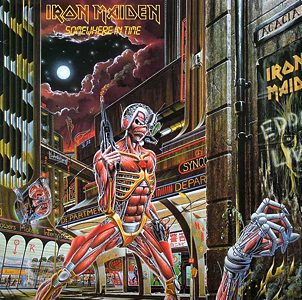
Iron Maiden - Somewhere In Time (EMI/Capitol, 1986)
Recorded both at Compass Point Studios in Nassau and at the legendary Wisseloord studio in Holland, Somewhere In Time marked a slight departure for Maiden, in that it featured the use of the then distinctly groundbreaking guitar synthesizer, something that had seldom been a feature in metal prior to that point. Guitarist Adrian Smith’s songs brought a fresh vibe and an air of radio-friendly oomph to the album too, perfectly complementing Steve’s compositions like instant live favourite Heaven Can Wait and the grandiose Alexander The Great.
It may have been the most controversial Maiden album to date, but Somewhere In Time, with its magnificently inspired and detailed Derek Riggs artwork featuring Eddie in full-on cyborg mode, would go on to delight the diehard fanbase, ensuring that the band’s momentum was in no way diminished by a slight change in musical mood. Released in September 1986, Somewhere In Time was another great success for Maiden on both sides of the Atlantic. Despite having come close to collective collapse at the end of the World Slavery tour, there was no way that chief songwriter Steve Harris or manager Rod Smallwood were going to allow the band to take their foot off the gas, and so they immediately embarked on another colossal world tour to support the new album.
Malfunctioning inflatables and ludicrous clobber aside, the Somewhere In Time tour was another unequivocal triumph for Maiden. Not only were they now enjoying unprecedented levels of popularity in both Europe and America, but even the Far East had succumbed to their charms – a phenomenon that led to the band headlining at Japan’s legendary Budokan venue for the first time.
Buy from HMV | Buy from Amazon
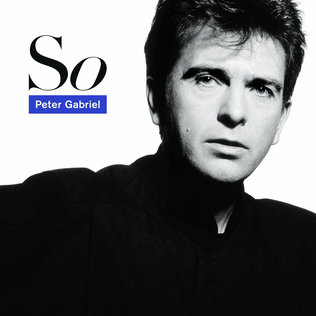
Peter Gabriel - So (Charisma/Virgin/Geffen, 1986)
If in 1986 – peak 80s – you’d suggested that So, Peter Gabriel’s biggest-selling and most MTV-promoted album, would be enjoying a vinyl release in 2016, you’d have been laughed out of town. Yet with the resurgence of the nation's favourite medium continuing apace, Gabriel – something of a digital pioneer – has been found praising its “warmth and presence”, and has reissued the album which first saw him become an international superstar on heavyweight 180-gram vinyl.
Crucially, Gabriel appreciates how the mystique and magic of a vinyl record can still enhance his inimitable style of progressive world soul music and its evocative visual accompaniments. Rather than seizing on this technique as a marketing ploy, he sees it as a further upgrade in his ongoing quest for sonic perfection, and another step towards hearing his music as he envisioned it when it first boomed out of his Real World studio.
Released in 1986, So was Gabriel’s fifth album and his mainstream breakthrough after he eased off on the experimental forays in favour of more accessible songs such as Sledgehammer, which featured his beloved Otis Redding’s trumpeter Wayne Jackson and whose video became the most played of all time on MTV, plus yuppie-numbering Big Time. It also included Don’t Give Up, the poignant Kate Bush duet set against Thatcher’s unemployment-stricken Britain. Minus the bonus tracks of 2011’s 25th-anniversary box, So takes shape as a double album – mainly two tracks a side, which might sound curiously dated by the Fairlight proto-sampler’s dominating tone, but ultimately that’s part of the fun.
Buy from HMV | Buy from Amazon
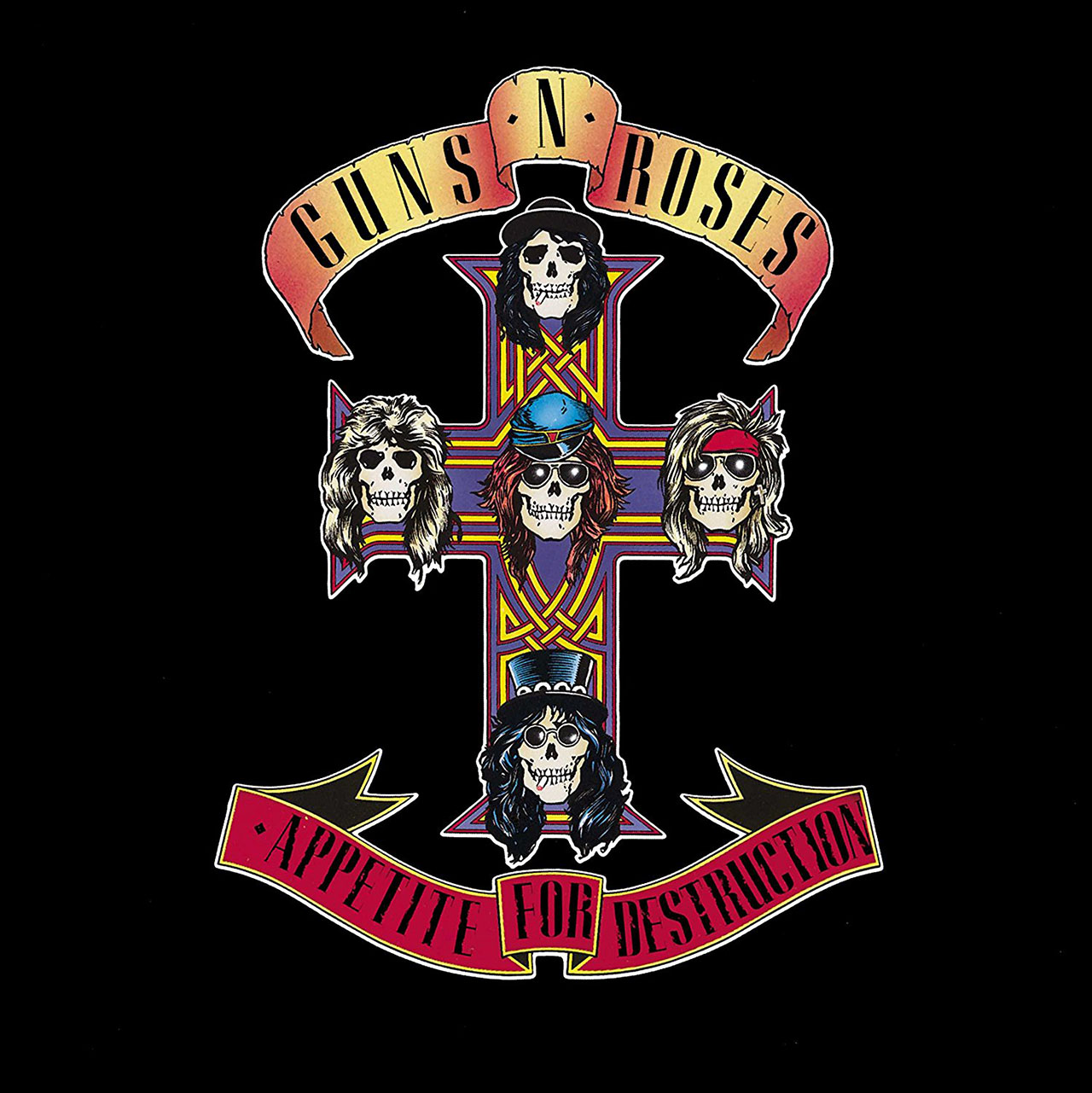
Guns N' Roses - Appetite For Destruction (Geffen, 1987)
Appetite For Destruction is one of the greatest records of all time, and one of the biggest – the biggest-selling debut album, ever – with over 30 million sales worldwide. It revolutionised rock music in the late-80s and transformed Guns N’ Roses into superstars, its success all the more amazing given the chaos in which it was created.
On one level, the success of Appetite was astonishing. It was the antithesis of corporate rock – raw and obnoxious, full of bad attitude and uncensored swearing. In the PC climate of the mid-80s, this was precisely the kind of record that ‘parental advisory’ stickers were made for, with nine out of 12 songs making explicit reference to sex, four to drugs, four to drinking.
But at the heart of the album was a core of truly great songs: In many ways, Welcome To The Jungle is the definitive Guns N’ Roses song, and an album opener which – from Axl’s opening words, ‘Oh my God’ – warns the listener in no uncertain terms that they better buckle up tight for the road ahead. Detailing Indiana boy Rose’s first wide-eyed, open-mouthed impressions of Los Angeles, this was the first song Slash and Axl ever wrote together, and it remains the ultimate statement of Guns’ fearless, reckless, last-gang-in-town swagger.
The ridiculous re-issue of Appetite For Destruction is also available now, and is sure to please even the keenest of GN'R-loving audiophiles.
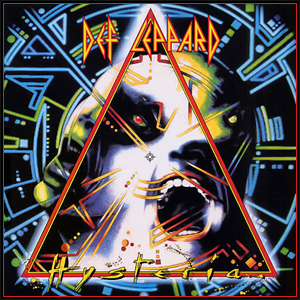
Def Leppard - Hysteria (Mercury Records, 1987)
If 1983’s Pyromania had Def Leppard dipping their toe into pop’s waters, Hysteria was a cannonball at the deep end. From the beginning, the album’s concept had remained the same – to be a hard rock version of Michael Jackson’s Thriller, on which every track could be a hit single (and indeed seven of the 12 tracks were, one more single than Thriller). At just over 25 million copies sold worldwide, Hysteria remains the band’s best-selling record.
Def Leppard’s turbocharged fourth record infamously took almost four years to produce and at a cost just shy of $5 million. The band initially wrote songs for Hysteria (then called Animal Instinct) with Mutt Lange, who had produced their previous two LPs. Lange quickly dropped out due to a full schedule and was replaced by Jim Steinman, best known for working with Meat Loaf on Bat Out Of Hell. But ultimately after creative differences with Steinman and a short hiatus after drummer Rick Allen lost his left arm in a car accident, Lange returned for Hysteria’s final recording sessions. Def Leppard apologised for the delay in LP’s liner notes, also compounded by Lange’s own car accident and frontman Joe Elliot’s bout of the mumps.
At a run time of around 63 minutes, Hysteria really stretched the limits of how long a standard album at the time could be – unfortunately for audiophiles, to the detriment of the vinyl pressings. Over an hour’s worth of music is way too much to squeeze onto a single platter and retain a high standard of audio quality. More recent vinyl releases of the album remedy this by running over two LPs, most notably the 30th Anniversary gatefold vinyl re-issue, featuring fully remastered tracks on a strikingly translucent orange 180g wax.
Buy from HMV | Buy from Amazon
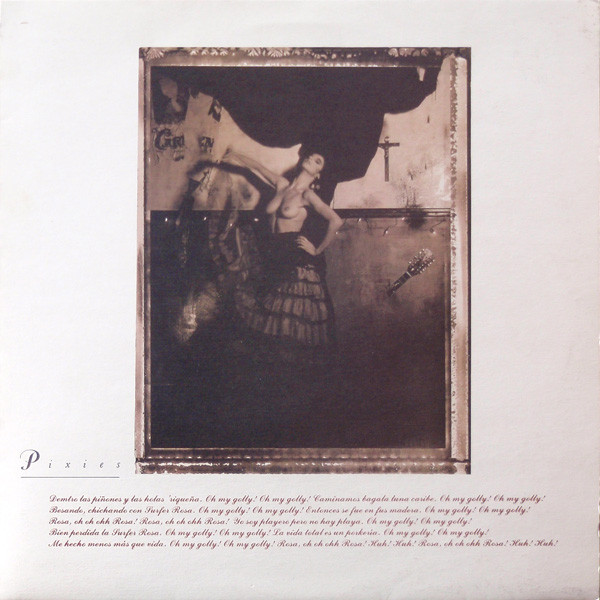
Pixies - Surfer Rosa (4AD, 1988)
The Boston band Pixies (note: not ‘The’ Pixies, there is no article here) were responsible for a lot, not least the sound of more or less every scratchy, jangly indie band you listened to in the ’90s. Nirvana in particular owed the group a serious debt, as their singer Kurt Cobain stated: he even used Pixies producer Steve Albini for his own third album.
The secret behind Pixies’ music, at least on their Surfer Rosa, the 1988 debut album we’re discussing here, was that the songs’ abrasive textures rested on real pop melodies that you could hum in the bath while still rocking out. The guitars were often heavyweight and the bass prominent, but the songs – whether sung by guitarist Frank ‘Black Francis’ Black or bassist Kim Deal – were still catchy as hell. The overall vibe was anarchic and a little chaotic, with Albini’s sympathetic production making you feel as though you were in the group’s rehearsal room with them. For example, you can hear the untrained singers actually gasping for breath during the song River Euphrates: that’s how real this album was.
This all allowed the songs to ring through with real emotion. Gigantic, the cut for which Deal – and possibly the band in general – is best known, is at heart a sweet love song, while Where Is My Mind? lies somewhere between an acoustic whimsy and an arena anthem made up of layers of drone guitar. Then there’s Break My Body, a classic album-opener of its era: in this single song, much of the band’s ethos appears, from guitar tracks that don’t quite match up – and are proud of it – to a super-live drum and bass sound. It’s all here.
A three-disc reissue of Surfer Rosa, plus mini-album Come On Pilgrim, are being reissued on gold vinyl later this year. You can pre-order now.
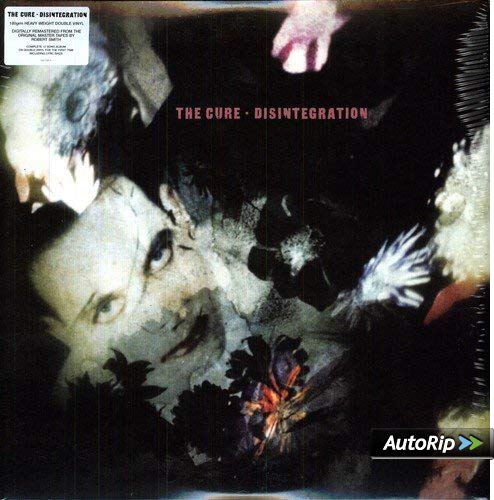
The Cure - Disintegration (1989)
In 1982, The Cure released Pornography – one of the bleakest records ever recorded. Seven short years later – after a slew of gleeful, day-glo pop hits – Disintegration would hit the shelves, its mood sombre and dark, and with a lyrical introduction (‘I think it’s dark and it looks like rain…’) to match its counterpart at the other end of the decade.
Smith's U-turn back to his gothic roots came as the time dawned to enter the studio for Disintegration, when he suddenly became aware that he and his band had become everything he didn’t want to be. They had become a huge stadium rock band. When the time came to record their final album of the 80s, it was quite a departure from 1987’s upbeat Kiss Me, Kiss Me, Kiss Me. But that didn’t stop the upward ascendancy of The Cure – fans latched on as easily to the sombre Pictures Of You, spooky Lullaby or plaintive Lovesong (written by Smith as a wedding present to his wife Mary), as they had to Just Like Heaven or The Love Cats.
After Disintegration, though, “most of the relationships within the band and outside of the band fell apart,” said Smith in 2004. “Calling it Disintegration was kind of tempting fate, and fate retaliated. The family idea of the group really fell apart too after Disintegration. It was the end of the golden period.”
It was also the end of the 1980s.
Buy from HMV | Buy from Amazon
Many of these entries were taken from our 100 Greatest Albums You Should Own On Vinyl special edition, which is available to buy now.
Louder is the ultimate resource for alternative music coverage and the home of iconic rock brands Classic Rock, Metal Hammer and Prog. With a combined reach of over five million followers across social media, we're the largest and most influential alternative music website in the world.

